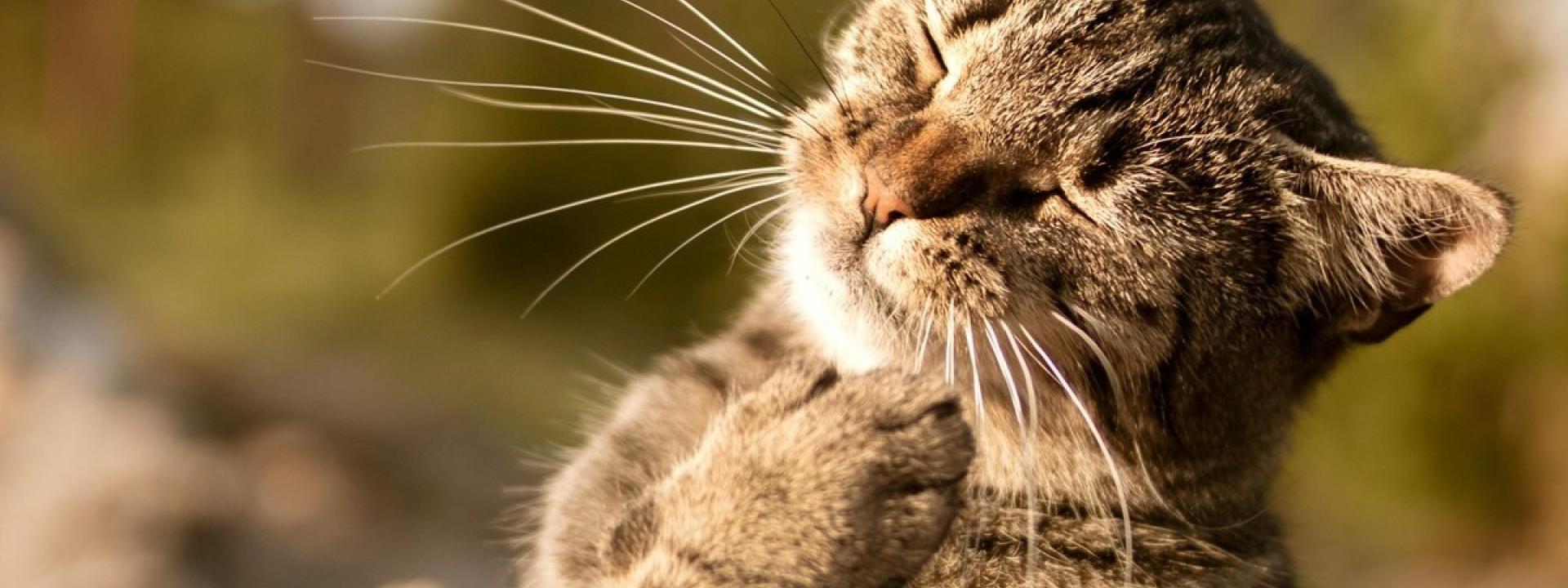- What is it?
IBD is when inflammatory cells invade the walls of the intestines (or the “gut”). They are usually white blood cells, but there are other cells that can sometimes participate. You can think of the gut wall like the layers of a perfectly made peanut butter and jelly sandwich. The white blood cells are like cottage cheese curds that get mixed in with the peanut butter and jelly – they cause the sandwich to be more thick, and they cause separation between the layers of the sandwich (this is assuming that most people don’t want cottage cheese on a PB&J – if this sounds delicious to you, then think of something that sounds gross…and please don’t ever make me a sandwich). As you can imagine, separating the layers of the gut wall makes it leaky. It can cause damage to the cells that make up the wall, which prevents the cells from doing their job. When the cells can’t absorb nutrients then your dog or cat starts flushing all the stuff they can’t absorb – which is why you see diarrhea and/or vomiting and weight loss. Your dog or cat may be eating a lot, but if they can’t absorb what they eat it’s basically like they don’t eat at all. The kind of symptoms your pet displays depends on where along the gut the inflammation is happening. Symptoms can come and go – and they are sometimes completely unrelated to eating.
- What causes it?
This question is a doozy. The simple answer is…(drumroll)…lots of things. Think of the IBD immune system like a group of incompetent security guards. We think the main cause of IBD is that these guards don’t protect the gut wall like they should. They allow bad bacteria access to the wall, and completely over-react when harmless or beneficial substances, like protein or carbohydrates, drop by. This happens for a variety of reasons – genetics, loss of immune system integrity, loss of wall integrity, or from the way that bad bacteria interact with what your pet eats. Because there are so many factors that influence the course of the disease, you can imagine why treatment can be very difficult and in some cases, non-rewarding.
- How do we find it?
If you’re now thinking, “well this IBD must be extremely difficult to diagnose due to the multifactorial etiopathogenesis and the transitory nature of the disease!” You’d be right!
But seriously, it’s hard to get a definitive diagnosis.
Being able to officially say a dog or cat has IBD is actually saying we’ve ruled out everything else that can cause similar symptoms. There are tons of other diseases that can cause vomiting and diarrhea – parasites, your pet raiding the garbage, stress, and endocrine disorders just to name a few. So if Fluffy has had vomiting, diarrhea, decreased appetite, or weight loss for longer than 3 weeks then we really need quite a lot of information. A physical exam, complete blood work including thyroid values and urinalysis, and a fecal exam are just for starters. This helps us rule out parasites, kidney disease, liver disease, or other problems that can cause the same symptoms as IBD but are treated in a completely different way. Your pet may need x-rays of the abdomen and an abdominal ultrasound. All of these diagnostics will help us to narrow down the cause of the chronic symptoms of IBD. Next, we may decide to put your pet on a dewormer, antibiotics, probiotics, or a food trial. If Fluffy responds well to any of these treatments, then we know it most likely isn’t IBD but parasites, overgrowth of bad bacteria, or food allergy. If Fluffy doesn’t respond to ANY of these therapies, and the other diagnostics I mentioned don’t show any major abnormalities, then the next step is to go in and get some pieces of the gut itself. Using endoscopy or surgery, we obtain small samples of the wall. These samples are then sent to a lab that will determine just what the heck the guards have let into the wall. In other words, pathologists will identify what type of cells are in the gut walls. This is the gold standard for diagnosing IBD.
- How do we treat it?
Since we can’t pinpoint one specific cause of IBD, treatment is usually multimodal. That is, we use many different treatments to try and tackle different components of the disease. We use a combination of diet, probiotics, Vitamin B, antibiotics, and immunosuppressant therapy. And since every animal has a slightly different version of IBD unique to that individual, no two therapies will be alike. What works well for one pet may not work for another. This is why it’s extremely important NOT to consult “Dr. Google.” You won’t find a single cure-all, and if someone claims to have found it…check for smoke. Their pants are on fire.

If you have any questions about IBD, or if you think your pet may be having trouble with any of these symptoms, please give us a call and schedule an appointment today!
Here’s to Happy, Healthy Pets!
Dr. Lauren Hendren
Sources:
Inflammatory Bowel Disease: Parts 1 and 2 ACVC, Robert Sherding, DVM, DACVIM, College of Veterinary Medicine, The Ohio State University, Columbus, OH, USA, 2013.
Inflammatory Bowel Disease: Linda Shell, DVM, DACVIM (Neurology), Reviewed by Sherri Wilson, DVM, DACVIM (Internal Medicine), http://www.vin.com/Members/Associate/Associate.plx?from=GetDzInfo&DiseaseId=1205, 1/10/2012.
Client Education Resources:
Veterinary Partner: http://www.veterinarypartner.com/Content.plx?P=A&S=0&C=0&A=598
Cornell University College of Veterinary Medicine: http://www.vet.cornell.edu/FHC/health_information/IBD.cfm
Merck Veterinary Manual: http://www.merckvetmanual.com/mvm/digestive_system/diseases_of_the_stomach_and_intestines_in_small_animals/inflammatory_bowel_disease_in_small_animals.html

